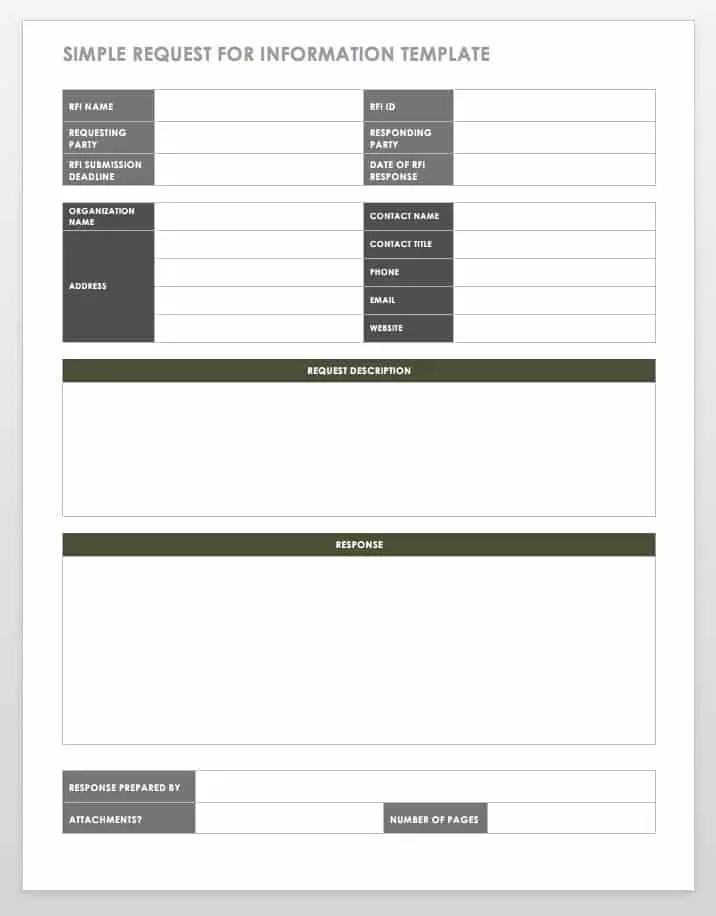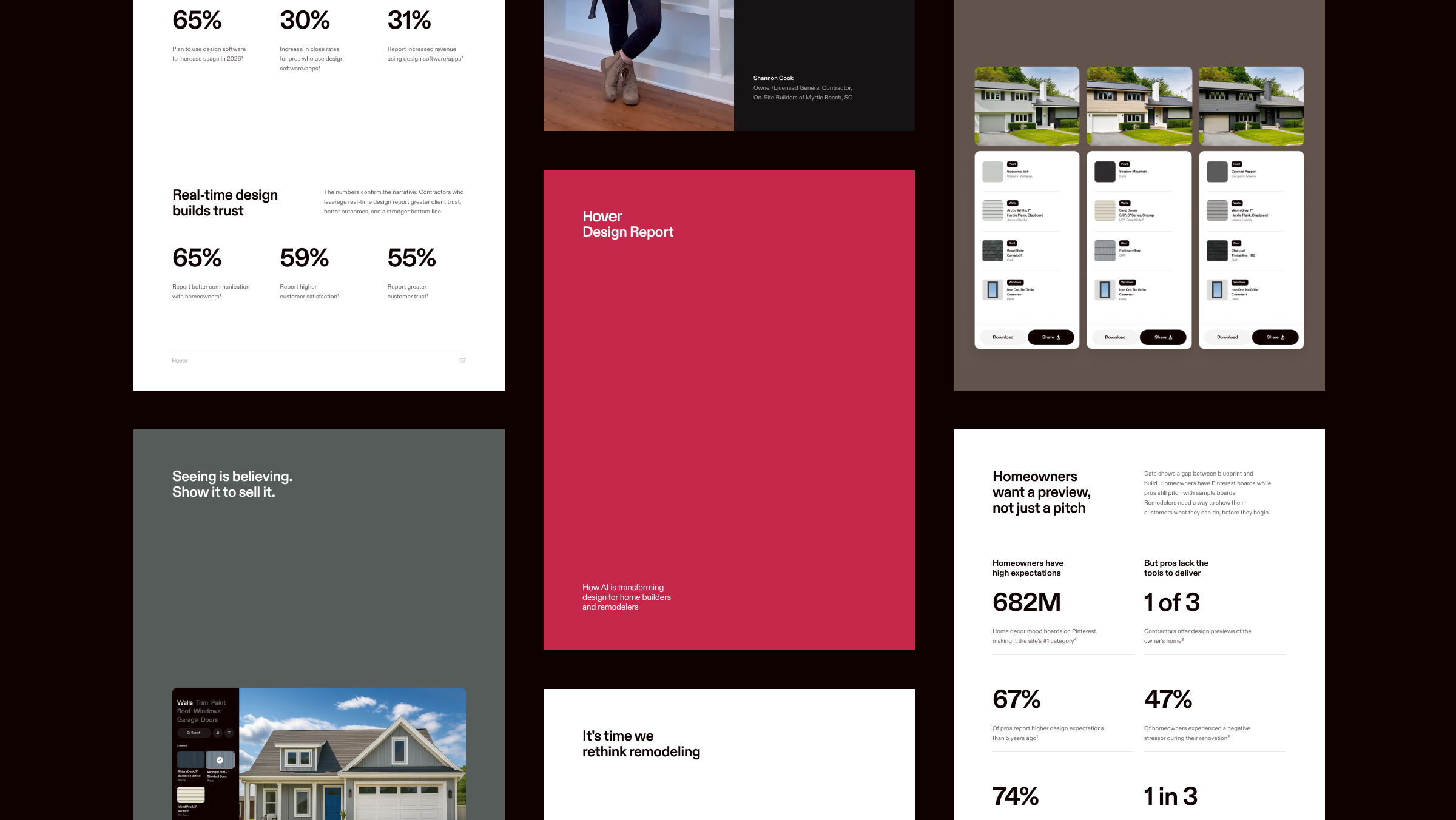A construction project is complicated. There are a lot of moving parts and stakeholders involved.
And unfortunately, no matter how much coordination or how in-depth your pre-construction plan is, there will always be questions.
Enter: a request for information (RFI).
These essential documents help keep a project moving along swiftly while gleaning key information from designers and engineers. Let’s dive deeper into these requests, why they’re important, and look at best practices when drafting one up.
What is an RFI in construction?
A request for information (RFI) is a document that aims to gather additional information during the course of a construction project.
It’s inevitable that the estimate, scope, and/or blueprints will have missing information and not address everything. So the goal of the RFI is to bridge the gap and obtain this necessary information.
You can also use RFIs to:
- Get additional details about a particular area of the project that isn’t clear
- Clarify the intent of the project
- Make substitutions where necessary
RFIs vs. RFPs vs. RFQs vs. RFTs
Navigating different types of requests in construction can be confusing. Here’s a quick breakdown of each type:
What is an RFP?
An RFP, or Request for Proposal, is a document issued by a project owner inviting potential vendors or contractors to submit a bid for a project. It outlines the project’s objectives, scope, and requirements, allowing vendors to propose solutions, pricing, and timelines. Unlike RFIs, which seek clarification, RFPs are designed to solicit specific proposals for completing work.
What is an RFQ?
An RFQ, or Request for Quotation, requests pricing information from potential vendors for specified services or products. It’s commonly used when a project owner has already determined the project scope and only needs cost comparisons. RFQs are usually more detailed than RFPs, focusing on exact pricing rather than project proposals.
What is an RFT?
An RFT, or Request for Tender, is a formal invitation to submit a detailed bid to complete a specific project or supply particular materials or services. It’s commonly used for large-scale construction projects and often follows strict legal and compliance guidelines. RFTs are used when the project scope, specifications, and timeline are clearly defined, and the project owner is seeking competitive bids from qualified vendors.
Types of construction RFIs
There are a lot of different types of RFIs out there—most organizations have dozens of classifications. But these are the most common ones:
Design change
A design change RFI is submitted when the subcontractor notices a mistake in the designs that needs fixing in order for the project to continue.
Design changes can be contentious because of the time-consuming workflow that is required. Plus, no one likes to hear their design might be faulty. Crafting a professional and respectful RFI can help ease some feelings.
Design clarification/incomplete specs
These are simply a request for further information about details within the design or specs in order to paint a clearer picture of the project. This could mean asking about specs that are poorly labeled or triple-checking confusing information.
Materials change
These emerge when the requester is looking to use different materials than the ones stated in the construction documents because they’re better for the project.
Time and phasing
If a builder needs to change the order of the construction process, they submit this type of RFI. This could happen due to labor or material constraints. Time and phasing RFIs could greatly improve the project's timeline, making them an important request.
Site conditions
If the builder gets to the site and the conditions are different than what’s stated in the designs, they should submit an RFI. Doing so can provide clarity on how the project should move forward and if other RFIs need to be sent.
Design or construction coordination
These are submitted to ask all parties involved with the project to communicate, coordinate, and organize the documents among one another. Design coordination RFIs specifically deal with the designs, while construction coordination RFIs are requests for safety and schedule information.
Value engineering
Contractors submit this RFI to request changes that would enhance the quality, reduce construction costs', or boost the efficiency of the project based on conditions at the site.
Utility conflict
Contractors might notice utility lines—water pipes, power lines—in the way of their construction project. They can submit this RFI to request the removal of these barriers or to obtain a solution on how to proceed.
Constructibility issues
If the construction documents have a detail or design that the contractor deems infeasible or impossible to construct, they file a constructibility issue RFI. This differs from the design change RFI because it asks for clarity on parts of the design, not for a design overhaul.
Why are RFIs important?
While no one prefers extra paperwork, RFIs are critical in the construction process because they influence the project’s safety, quality, budget, risk, and liability. Faulty or improper communication between parties could affect the general timeline or the contractor's livelihood. Communicating concerns or improvement suggestions clearly helps to ensure a safe and successful project.
Submitting RFIs is important, but a fast and thoughtful response is just as important, if not more so. A study of one million RFIs found the average response is just over nine days.
Not only is that a lot of downtime in the project’s timeline, but it’s a major cost too. The average cost for reviewing and responding to RFIs was $1,080 and the average number of RFIs per project was 796. This clearly adds up, and no one wants to shoulder these extra costs. Simply responding to an RFI swiftly can help avoid these costly delays.
How to develop an RFI: The process
There are many stakeholders involved in a construction project.
So making sure the RFI gets to the right person can involve a lot of steps and time. Here’s typically what the process looks like when submitting an RFI:
-
A subcontractor writes an RFI asking for clarity regarding the designs, contract, specifications, or standards. It’s then submitted to the general contractor.
-
The general contractor should produce a response and send it back to the subcontractor.
-
However, if they need more information, or the general contractor cannot answer it alone, the RFI is sent to the architect, engineer, consultant, or client.
-
Once the appropriate person has the RFI, they answer it with sufficient information and send it back to the subcontractor.
-
Work resumes. Or, if the answer does not suffice, the RFI is revised and sent through the process again.
Who is Responsible for the RFI?
On larger construction projects, the project manager is the one responsible for reviewing and sending RFIs to the right people. Design, engineering, and construction project teams then assess the RFI depending on the ask. However, generally, it’s the people on the ground who prepare and submit the initial RFIs.
Construction RFI Best Practices
Ensuring an RFI gets a swift response starts with submitting an effective request. Take a look at some RFI best practices:
Lead with a question
Rather than just submitting a statement, it’s best to ask a question that the contractor needs to have answered. Since multiple stakeholders will see an RFI, the wording should be clear and concise, leaving little room for confusion.
By simply stating the problem rather than asking a question, the engineer or designer might not understand what is needed from them. Asking a question makes it clear exactly what the problem is.
Provide context
The person receiving the RFI might not be as familiar with the job site or jargon as the person submitting the request. Making sure the question is surrounded by context and is jargon-free helps to ensure anyone reading it will understand. Understanding the reasoning behind the question is just as important as the ask.
Add visuals
Including visuals—sketches, photos, videos—helps to add additional context to the request. The person requesting can point to the visuals to help eliminate any confusion.
Offer a solution
The person submitting the RFI should feel free to present their idea on how to solve the problem. Making a suggestion can help speed up the response process—a win, win for everyone.
Be specific with location details
Specifying the exact location on the project site where the issue arises can prevent misunderstandings. Indicate locations clearly on plans or photos, particularly if multiple similar areas exist within the project. This extra precision can help the recipient understand the context and provide the most accurate response, saving both parties time.
Limit RFIs to one question or issue
Avoid sending RFIs with multiple questions or issues at once, as this can lead to fragmented responses or unnecessary delays. By limiting each RFI to a single, focused question or request, recipients can provide a thorough response to each topic without confusion. When multiple questions are necessary, use separate RFIs to maintain clarity and improve tracking.
Use a consistent format
Using a consistent format across RFIs keeps the information organized and familiar to those who will be responding. Structure each RFI with the same sections, and use a standardized template if available. This reduces the chance of missed information and facilitates quicker reviews by the recipient team.
An example of a construction RFI
There are thousands of construction companies so there are thousands of construction RFI templates.
That being said, let’s look at an example of a standard construction RFI:

Source: https://www.smartsheet.com/content/construction-rfi-templates
Here's an example of a simplified RFI:

Source: https://www.smartsheet.com/content/construction-rfi-templates
An RFI form typically includes the following sections, allowing both the requesting and responding parties to track and document critical details:
- Project Name
- RFI ID and Project ID numbers
- Date of Request
- Project Location for specific issue clarity
- RFI Overview summarizing the nature of the query
- Request Details outlining the question or request
- Name and Title of the requesting party
- Name and Title of the responding party
- Response Details providing the answer or clarification
- Date of Response to track the timeline
- Contact Information and Addresses of both parties for follow-up
Each section helps maintain a clear, structured record for quick reference, especially helpful in cases of project review or audit.
How to respond to an RFI
Responding to an RFI quickly and accurately is crucial to keeping the project on schedule. Here are some best practices to consider when preparing your response:
Acknowledge reciept
Upon receiving an RFI, acknowledge it to let the requester know it’s being reviewed. This provides assurance that their query is under consideration and reduces follow-up inquiries.
Respond with complete information
Avoid partial responses, as these can delay the project and lead to additional questions. Make sure all aspects of the question are answered clearly and comprehensively. If multiple stakeholders need to review the RFI, make sure the final response is cohesive before returning it to the requester.
Use visuals and attachments
If the response involves complex details or instructions, include annotated drawings, photos, or sketches to aid comprehension. Visual aids help clarify technical details, allowing the requester to see exactly what you are addressing and improving the likelihood of immediate implementation.
Manage your RFIs with Hover
Hover is a great solution to help with your digital construction document management. It integrates with your favorite tools, so you can share data and track requests across a variety of platforms.
Request a demo today and see how Hover can help you stay organized and on schedule!



